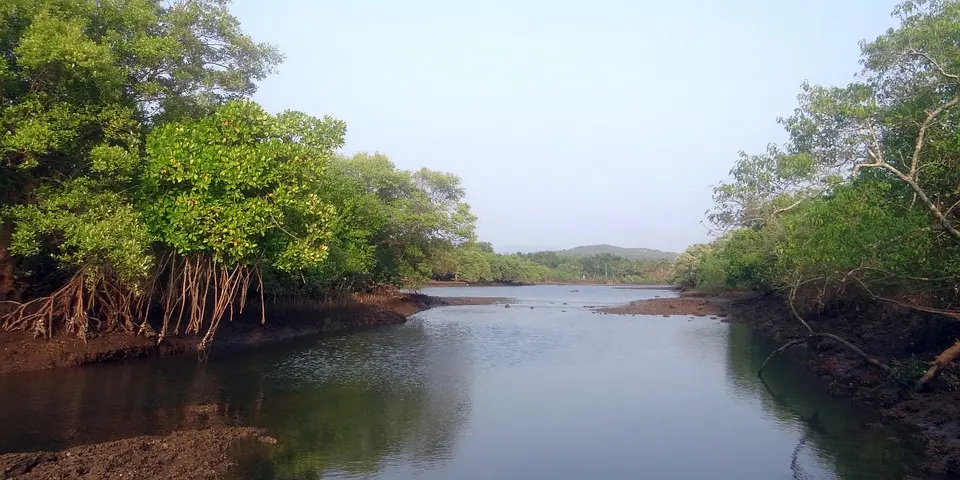Tarpon: Habitats - Mangroves
Table of Contents
- Fishing Mangroves for Tarpon
- Overview of Fishing Mangroves for Tarpon
- Mangrove Features and Locations
- Tarpon Behavior in Relation to Mangroves
- Targeting Tarpon in Mangrove Environments
- Retrieve Techniques and Strategies
- Targeting Large Female Tarpon
- Community and Expert Angler Tips
- Popular Search Terms Related to Mangroves for Tarpon
Fishing Mangroves for Tarpon

Image Credit: sarangib on Pixabay
Overview of Fishing Mangroves for Tarpon
Mangroves offer a unique and highly productive habitat that tarpon frequent, making them prime locations for angling. These complex ecosystems—composed of various mangrove species, aerial roots, and intricate waterways—serve as both feeding and resting areas for tarpon. Understanding the features of mangroves and the behavior of tarpon in relation to these structures is key to successful fishing in these environments.
Mangrove Features and Locations
-
Structural Complexity:
Mangroves are distinguished by their network of prop roots and aerial structures that provide:- Shelter: Ideal refuge for tarpon from predators and strong currents.
- Foraging Grounds: The dense vegetation attracts baitfish, crustaceans, and other prey that in turn attract tarpon.
- Ambush Points: The varied structure creates natural ambush sites for tarpon waiting to strike.
-
Key Mangrove Locations:
Tarpon are commonly found near:- Estuarine Mangrove Forests: Where the mix of fresh and saltwater produces nutrient-rich conditions.
- Coastal Inlets and Bays: Offering a blend of shallow feeding areas and deeper water refuges.
- River Mouths and Delta Regions: Extensive mangrove systems in these regions serve as natural aggregation points for tarpon.
Tarpon Behavior in Relation to Mangroves
-
Proximity to Mangroves:
Tarpon often patrol the edges of mangrove stands, moving in and out of the cover as they search for food. They may use the shadowed areas under the roots as ambush spots. -
Temperament in or Near Mangroves:
- General Behavior: Tarpon near mangroves can be both aggressive and cautious depending on water conditions and prey availability.
- Feeding Mode: When actively feeding, tarpon are likely to strike at lures that mimic the erratic motion of injured prey concentrated around the mangrove roots.
- Large Female Tarpon: These often reside in deeper channels or along the outer fringes of mangrove areas. Their strikes are typically more deliberate, requiring a refined approach.
Targeting Tarpon in Mangrove Environments
Retrieve Techniques and Strategies
-
Stop-and-Go Retrieve:
- When to Use: Particularly effective if tarpon seem cautious or in low-light conditions.
- Technique: Alternate between steady motion and brief pauses. This intermittent action mimics injured or drifting prey, enticing strikes from hesitant tarpon.
-
Erratic Twitching:
- When to Use: Ideal when tarpon have grown conditioned to regular lure movements.
- Technique: Add sharp, irregular twitches to your retrieve to simulate the erratic escape of distressed prey, often provoking an explosive strike.
Targeting Large Female Tarpon
- Presentation Adjustments:
For large females, use a slower, more deliberate retrieve to match their selective feeding behavior. - Lure Selection:
Choose lures that closely mimic the local baitfish in both size and color. Natural, reflective hues such as silver, blue, and white tend to be most effective. - Location Focus:
Concentrate your efforts on deeper channels or the outer edges of mangrove stands where large females are more likely to congregate.
Community and Expert Angler Tips
- Learning Through Video:
Watching detailed video tutorials can offer practical tips and refined techniques. The video below is a great resource for learning effective strategies for Tarpon fishing near Mangroves.

Click the thumbnail above to watch a detailed guide on fishing mangroves for tarpon.
For more tips, check out "fishing Mangroves for Tarpon tips" on YouTube
Popular Search Terms Related to Mangroves for Tarpon
| Search Term | Thumbnail | Link |
|---|---|---|
| Mangrove Tarpon Techniques | Watch Video | |
| Best Lures for Tarpon in Mangroves | Watch Video | |
| Mangrove Retrieve Strategies for Tarpon | Watch Video | |
| Where to Find Tarpon in Mangrove Areas | Watch Video | |
| Tarpon Fishing Tips in Mangroves | Watch Video |
Ask AI for More Info
Try our AI assistant for free—sign up to access this powerful feature.
👉 Sign Up to Ask AI